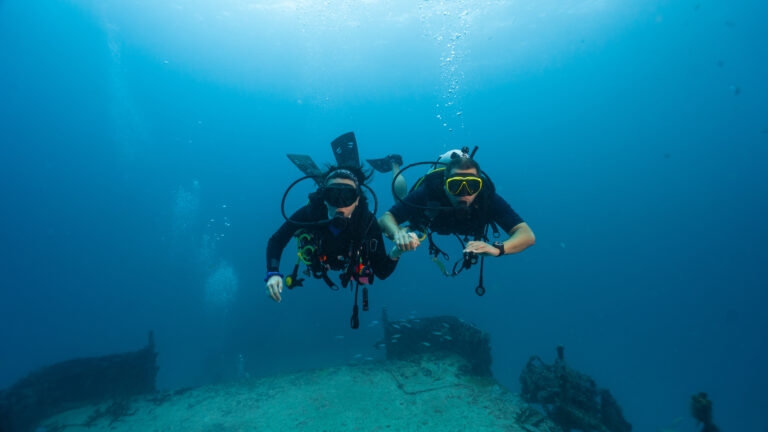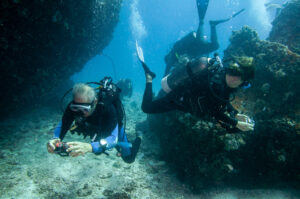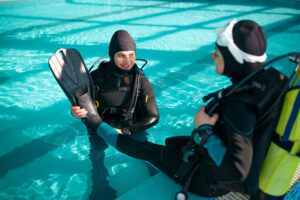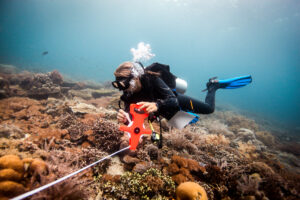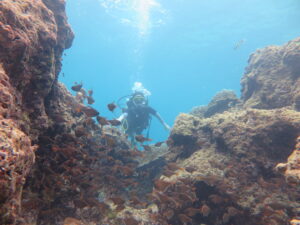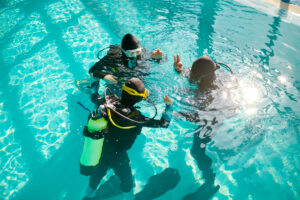What is a Decompression Algorithm?
A decompression algorithm is a crucial component in scuba diving, designed to calculate the safest ascent profile for divers to avoid decompression sickness (DCS), commonly known as “the bends.” These algorithms predict how inert gases, such as nitrogen, absorbed by the body’s tissues under pressure, are safely released during ascent. By determining the rate at which a diver should ascend and incorporating safety stops, decompression algorithms play an essential role in enhancing diver safety. Their development and refinement are grounded in extensive research, physiological understanding, and technological advancements in diving equipment.
Historical Development
The history of decompression algorithms is deeply intertwined with the evolution of diving technology and safety protocols. In the early days of diving, divers relied on empirical observations and rudimentary tables to avoid DCS. These tables were developed based on trial and error, leading to numerous cases of decompression sickness due to the lack of a scientific foundation.
The early 20th century marked significant advancements with the work of John Scott Haldane, a pioneer in decompression research. Haldane’s experiments on goats led to the formulation of the first mathematical model for decompression, introducing the concept of “half-times” for tissue saturation and desaturation. This model laid the groundwork for future research and the development of more sophisticated decompression algorithms.
Over the decades, researchers continued to refine these models, incorporating more accurate physiological data and understanding the behavior of gases under pressure. The introduction of computers in the 1970s and 1980s revolutionized decompression studies, allowing for the creation of more complex and precise algorithms. This period saw the development of several prominent models that are still in use today, such as the Bühlmann algorithm and the Reduced Gradient Bubble Model (RGBM).
Basic Principles of Decompression Algorithms
Decompression algorithms are grounded in the principles of gas absorption and elimination in the human body. When a diver descends, the increased pressure causes inert gases from the breathing mix, primarily nitrogen, to dissolve into the body’s tissues at a rate proportional to the ambient pressure. Different tissues absorb and release these gases at varying rates, described by their “half-times.”
A half-time is the time it takes for a tissue to absorb or eliminate half of the difference between its current gas pressure and the ambient pressure. Tissues with short half-times saturate and desaturate quickly, while those with long half-times do so slowly. Decompression algorithms must account for these varying rates to calculate safe ascent profiles that allow for the gradual elimination of inert gases, minimizing the risk of bubble formation and DCS.
Central to these algorithms is the concept of “M-values,” or maximum permissible inert gas pressures for different tissues. During ascent, the diver’s ambient pressure decreases, causing the dissolved inert gases to come out of solution. If the pressure reduction is too rapid, bubbles can form, leading to DCS. By adhering to calculated ascent rates and incorporating decompression stops, divers can ensure that the inert gases are released safely.
Types of Decompression Algorithms
Several decompression algorithms have been developed, each with unique features and applications. The Bühlmann Decompression Algorithm, named after Swiss physician Albert A. Bühlmann, is one of the most widely used models in recreational diving. This algorithm uses a set of M-values for different tissues and calculates the safe ascent profile by ensuring that the inert gas pressures remain within these limits. The Bühlmann model has been extensively validated and is implemented in many dive computers and tables.
The Varying Permeability Model (VPM) is another significant decompression algorithm, primarily used in technical diving. VPM focuses on the formation and growth of microscopic bubbles, known as “nuclei,” within the body’s tissues. By modeling the behavior of these nuclei under varying pressures, VPM aims to minimize bubble formation and growth during ascent. This approach allows for more conservative decompression schedules, reducing the risk of DCS in complex dives involving deep or extended bottom times.
The Reduced Gradient Bubble Model (RGBM) is an evolution of the VPM, incorporating additional factors such as bubble dynamics and varying ascent rates. RGBM accounts for both dissolved gas pressures and bubble growth, providing a more comprehensive approach to decompression. It is particularly useful in technical diving, where divers may encounter more challenging conditions and require precise decompression planning.
Implementation in Dive Computers
Modern dive computers are sophisticated devices that integrate decompression algorithms to provide real-time guidance to divers. These computers continuously monitor depth, time, and other critical parameters, using built-in algorithms to calculate the safest ascent profile. By displaying this information clearly, dive computers help divers adhere to safe practices and avoid decompression sickness.
Different dive computer brands and models may use varying algorithms, leading to differences in their performance and safety features. For example, some computers may offer more conservative profiles, prioritizing safety by recommending longer decompression stops, while others might provide more liberal profiles, allowing for shorter stops based on the same dive data. Divers can often customize settings on their computers to match their personal preferences and the specific conditions of their dives.
The integration of user settings and customization is crucial in ensuring that dive computers meet the diverse needs of divers. Factors such as altitude, water temperature, and individual susceptibility to DCS can influence decompression requirements. By adjusting these settings, divers can tailor the algorithm’s output to their specific conditions, enhancing both safety and comfort during their dives.
Impact of Algorithms on Diving Safety and Practices
The introduction and widespread use of decompression algorithms have profoundly impacted diving safety and practices. These algorithms have provided divers with more accurate and reliable methods to plan their ascents, significantly reducing the incidence of decompression sickness. The ability to calculate precise decompression stops and ascent rates has enabled divers to undertake more complex and extended dives with confidence.
Several case studies highlight the positive effects of decompression algorithms on diver safety. For instance, the use of advanced algorithms in technical diving has allowed for successful deep dives and exploration missions that would have been considered too risky in the past. Divers can now access challenging underwater environments while minimizing the risk of DCS through meticulous decompression planning.
Current standards and guidelines for diving practices have been heavily influenced by the research and development of decompression algorithms. Organizations such as the Professional Association of Diving Instructors (PADI) and the National Association of Underwater Instructors (NAUI) incorporate these algorithms into their training programs, ensuring that divers are well-versed in safe ascent procedures. The continuous improvement of decompression algorithms, driven by ongoing research, ensures that diving practices evolve in tandem with our understanding of human physiology and gas dynamics.
Challenges and Limitations
Despite the advancements in decompression algorithms, they are not without challenges and limitations. One significant limitation is that current algorithms may not fully address all diving scenarios, particularly those involving extreme depths or extended durations. The complexity of human physiology and the varying responses to decompression stress make it difficult to develop a one-size-fits-all solution.
Common complications faced by divers using these algorithms include individual variations in susceptibility to decompression sickness and the influence of external factors such as cold water, strenuous activity, and dehydration. These factors can affect gas absorption and elimination rates, making it challenging for algorithms to predict the safest ascent profile accurately.
Education and training play a vital role in mitigating the risks associated with decompression algorithms. Divers must understand the limitations of their equipment and the algorithms they use, as well as recognize the signs and symptoms of decompression sickness. By staying informed and adhering to best practices, divers can enhance their safety and make informed decisions during their dives.
Key Takeaways
Decompression algorithms are a cornerstone of scuba diving safety, providing the calculations necessary to avoid decompression sickness and ensure safe ascents. From their historical development and basic principles to their implementation in modern dive computers, these algorithms have revolutionized diving practices. Despite their challenges and limitations, decompression algorithms continue to evolve, driven by ongoing research and a commitment to diver safety. Understanding and utilizing these algorithms effectively is essential for all divers, ensuring that underwater exploration remains a safe and enjoyable activity.

